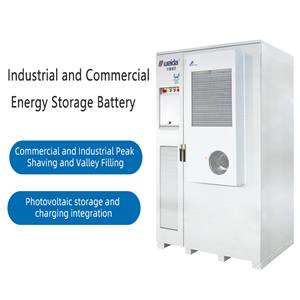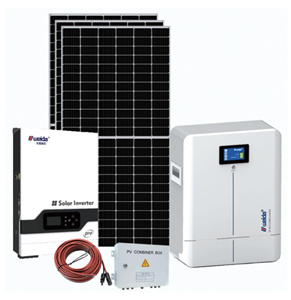Home energy storage systems and Solar battery energy storage system
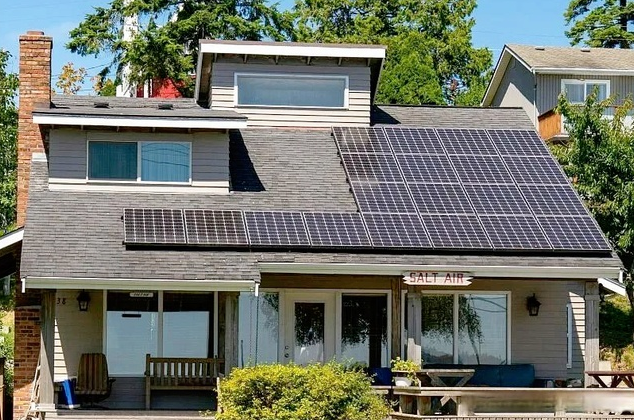
A home energy storage system is a system that utilizes rechargeable batteries or other energy storage devices to store electricity for future use in the home.
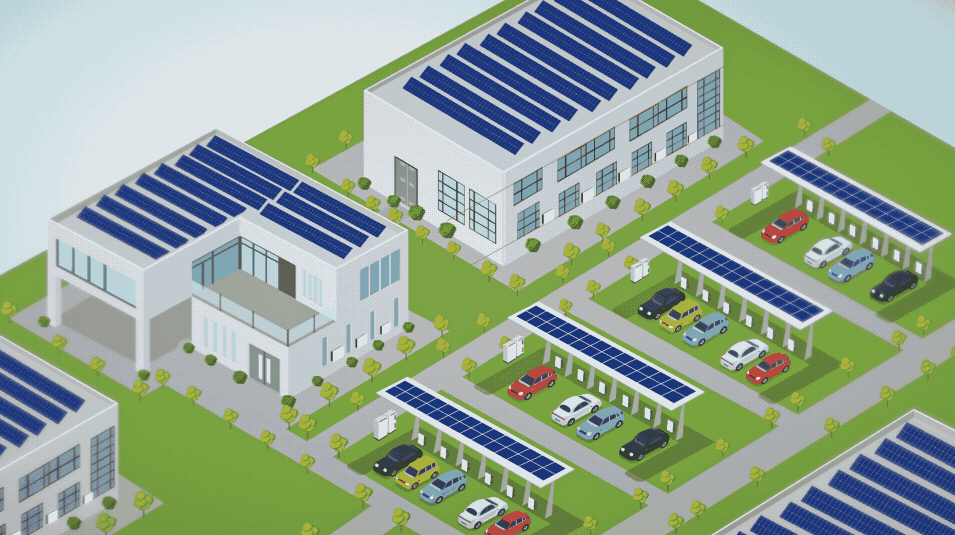
Solar battery energy storage system refers to the use of solar photovoltaic power generation system to generate electricity and store the excess electricity in a battery for home or business use. Solar battery energy storage system is mainly composed of three parts: photovoltaic power generation system, battery and controller.
Home energy storage systems can provide the following benefits to the home:
Improve electricity security: In the event of a power outage or power limitation, a home energy storage system can provide families with emergency power to protect their daily lives from being affected.
Reduce electricity costs: Home energy storage systems can reduce electricity costs by storing low-priced electricity during the day and using it during high-priced hours at night.
Enhance the efficiency of energy utilization: Home energy storage systems can store renewable energy generation such as solar and wind power, reducing the dependence on fossil energy.
The main types of home energy storage systems are as follows:
Utility Energy Storage System: Utilizes utility power to charge and provide emergency power in the event of a power outage.
Grid-tied energy storage system is a home energy storage system that utilizes utility power for charging and provides emergency power during power outages. Grid-tied energy storage system mainly consists of three parts: battery, inverter and controller.

The battery is the core component of the utility energy storage system and is responsible for storing electrical energy. Commonly used battery types for utility energy storage systems are lead-acid batteries, lithium iron phosphate batteries and sodium ion batteries. Lead-acid batteries are low in price but short in life; lithium iron phosphate batteries are high in price but long in life; sodium ion batteries are in between in price and in between in life.
The inverter is a device that converts the power stored in the battery to utility power. The types of inverters commonly used in utility energy storage systems are active inverters and passive inverters. Active inverters can convert the DC power stored in the battery to AC power, but the efficiency is low; passive inverters can convert the DC power stored in the battery to AC power, but the efficiency is high.
The controller is the device responsible for controlling the operation of the utility energy storage system. The controller can control the charging and discharging of the battery according to the user's electricity demand.
The advantages of the utility power storage system are mainly as follows:

Improve the safety of electricity consumption: In the event of a power outage, the utility power storage system can provide emergency power for the family to protect the daily life from being affected.
Reduce electricity costs: Utility energy storage systems can store low-priced electricity during the day and use it during high-priced hours at night, thus reducing electricity costs.
Enhance the efficiency of energy utilization: utility energy storage system can store renewable energy generation and reduce the dependence on fossil energy.
The main disadvantages of utility energy storage systems are as follows:
Higher price: the price of a utility energy storage system is mainly determined by factors such as capacity, battery type, and installation cost. Generally speaking, the higher the capacity, the better the battery type, and the higher the installation cost, the more expensive it is.
Shorter lifespan: The battery life of utility energy storage systems is generally 3-5 years.
Lower efficiency: The inverter efficiency of utility energy storage systems is generally 80-90%.
The use of utility energy storage system needs to pay attention to the following points:
Choose the right capacity: according to the household's electricity demand, choose the right capacity.
Choosing the right type of battery: according to the budget and demand of the family, choose the right type of battery.
Regular maintenance: Check the status of the battery regularly and replace damaged batteries in time.
With the advancement of energy storage technology and cost reduction, utility energy storage system will become the choice of more and more families.
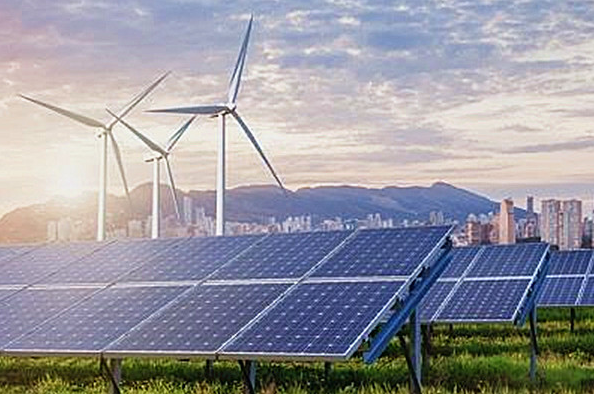
Photovoltaic energy storage system: Charging with photovoltaic power generation, using photovoltaic power generation during the daytime and energy storage batteries at night.
Photovoltaic energy storage system (PV-battery energy storage system) refers to the use of photovoltaic power generation system to generate electricity and store the excess electricity in the battery for home or business use. PV-battery energy storage system is mainly composed of three parts: PV power generation system, battery and controller.
The PV power generation system is the core component of the PV energy storage system and is responsible for converting solar energy into electrical energy. The types of PV modules commonly used in PV power generation systems are monocrystalline silicon, polycrystalline silicon and thin film modules. Monocrystalline modules have the highest efficiency but are also the most expensive; polycrystalline modules are moderately priced and have better overall performance; thin film modules have the lowest price but also the lowest efficiency.
The battery is the energy storage component of the PV energy storage system, responsible for storing the electricity generated by the PV power generation system. Commonly used battery types for PV energy storage systems are lead-acid batteries, lithium iron phosphate batteries, and sodium ion batteries. Lead-acid batteries have the lowest price but the shortest life span; lithium iron phosphate batteries are moderately priced and have a longer life span; sodium ion batteries have the highest price and the longest life span.
The controller is the control component of the PV energy storage system and is responsible for controlling the operation of the PV power generation system and the battery. The controller can control the charging and discharging of the battery according to the user's electricity demand.
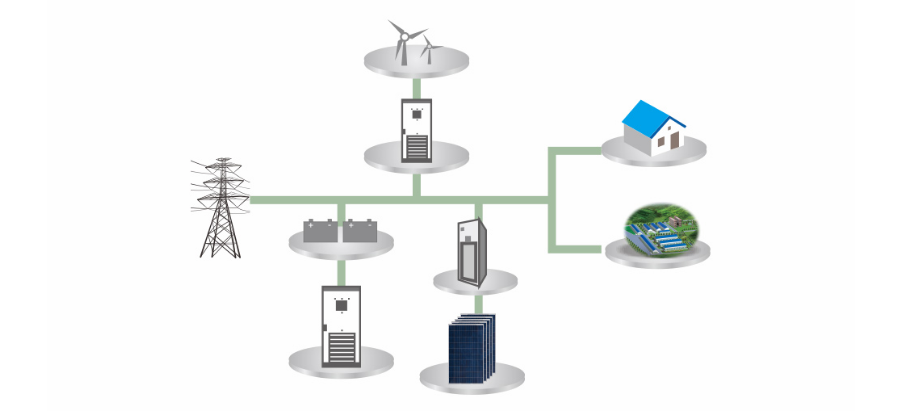
The advantages of PV energy storage system are mainly as follows:
Improve the safety of electricity consumption: In the event of a power outage, the PV energy storage system can provide emergency power for households or businesses, ensuring that daily life or production is not affected.
Reduce the cost of electricity: PV energy storage systems can store low-priced electricity during the day and use it during high-priced hours at night, thus reducing the cost of electricity.
Enhance energy utilization efficiency: PV energy storage systems can store the excess electricity generated by PV power generation systems, reducing the rate of light abandonment.
Reduce dependence on fossil energy: PV energy storage systems can store the electricity generated from renewable energy sources, reducing dependence on fossil energy sources.

The main disadvantages of PV energy storage systems are as follows:
Higher price: the price of PV energy storage system is mainly determined by the capacity, battery type, installation cost and other factors. Generally speaking, the higher the capacity, the better the battery type, and the higher the installation cost, the more expensive it is.
Shorter lifespan: The battery life of PV energy storage system is generally 3-5 years.
Lower efficiency: the inverter efficiency of PV energy storage system is generally 80%-90%.

The use of PV energy storage system needs to pay attention to the following points:
Choose the right capacity: according to the electricity demand of the home or business, choose the right capacity.
Choosing the right type of battery: according to the budget and demand of the family or business, choose the right type of battery.
Regular maintenance: Check the status of the battery regularly and replace damaged batteries in time.
With the advancement of energy storage technology and cost reduction, PV energy storage system will become the choice of more and more families or businesses.
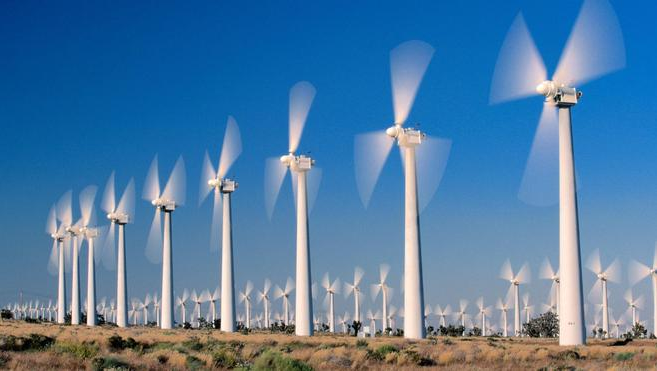
Wind energy storage system: use wind power to charge, use wind power to generate electricity when the wind is abundant, and use the storage battery when the wind is insufficient.
Wind-battery energy storage system (wind-battery energy storage system) refers to the use of wind power generation system to generate electricity, and the excess electricity stored in the battery for home or business use. The wind-battery energy storage system is mainly composed of three parts: the wind power generation system, the battery and the controller.
The wind power generation system is the core component of the wind energy storage system and is responsible for converting wind energy into electricity. The types of wind turbines commonly used in wind power generation systems are horizontal axis wind turbines and vertical axis wind turbines. Horizontal-axis wind turbines are the most efficient, but also the most expensive; vertical-axis wind turbines are the least expensive, but also the least efficient.

The battery is the energy storage component of the wind energy storage system and is responsible for storing the electricity generated by the wind power system. Common types of batteries used in wind energy storage systems are lead-acid batteries, lithium iron phosphate batteries, and sodium-ion batteries. Lead-acid batteries have the lowest price but the shortest life span; lithium iron phosphate batteries are moderately priced and have a longer life span; sodium ion batteries have the highest price and the longest life span.
The controller is the control component of the wind energy storage system and is responsible for controlling the operation of the wind power generation system and the battery. The controller can control the charging and discharging of the battery according to the user's electricity demand.
The advantages of wind energy storage systems are mainly as follows:
Improve electricity security: In the event of a power outage, a wind energy storage system can provide emergency power for homes or businesses, safeguarding daily life or production from being affected.
Reduce the cost of electricity: Wind energy storage systems can store low-priced electricity during the day and use it during high-priced hours at night, thus reducing the cost of electricity.
Enhance the efficiency of energy utilization: Wind energy storage systems can store the excess electricity generated by wind power systems, reducing the rate of wind abandonment.
Reduce dependence on fossil energy: Wind energy storage systems can store the electricity generated from renewable energy sources, reducing dependence on fossil energy sources.
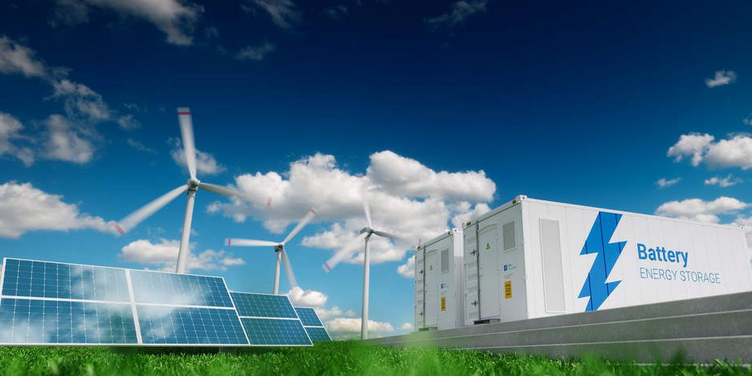
The main disadvantages of wind energy storage systems are as follows:
Higher price: the price of a wind energy storage system is mainly determined by factors such as capacity, battery type, and installation cost. Generally speaking, the higher the capacity, the better the battery type, and the higher the installation cost, the more expensive it is.
Shorter lifespan: The lifespan of the batteries of wind energy storage systems is generally 3-5 years.
Lower efficiency: the inverter efficiency of wind energy storage systems is generally 80-90%.
The use of wind energy storage system needs to pay attention to the following points:
Choosing the right capacity: according to the electricity demand of the home or business, choose the right capacity.
Choosing the right type of battery: according to the budget and demand of the home or business, choose the right type of battery.
Regular maintenance: Check the status of the battery regularly and replace damaged batteries in time.
With the advancement of energy storage technology and cost reduction, wind energy storage system will become the choice of more and more families or businesses.
The differences between wind energy storage system and photovoltaic energy storage system are mainly as follows:
Wind energy storage systems utilize wind power generation systems to generate electricity, while photovoltaic energy storage systems utilize photovoltaic power generation systems to generate electricity.
The efficiency of wind energy storage systems is generally higher than that of PV energy storage systems.
The cost of wind energy storage systems is generally higher than that of PV energy storage systems.
Specifically, wind energy storage systems are generally more efficient than PV energy storage systems because wind power systems are generally more efficient than PV power systems. Wind power systems generally have efficiencies of 30%-50%, while PV power systems generally have efficiencies of 20%-25%. In addition, the cost of wind energy storage systems is generally higher than that of PV energy storage systems because the cost of wind turbines is generally higher than that of PV modules.
The price of a home energy storage system depends largely on factors such as capacity, battery type, and installation costs. In general, the higher the capacity, the better the battery type, and the higher the installation cost, the more expensive the system will be.
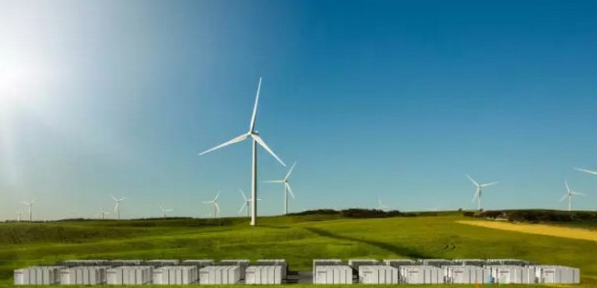
The following factors need to be considered for the purchase and installation of a home energy storage system:
Household electricity demand: Select the appropriate capacity according to the household's electricity demand.
Battery type: Currently the commonly used types of home energy storage batteries are lead-acid batteries, lithium iron phosphate batteries and sodium ion batteries. Lead-acid batteries are low in price but short in life; lithium iron phosphate batteries are high in price but long in life; sodium ion batteries are in between in price and in between in life.
Installation cost: The installation cost of a home energy storage system is typically 20-30% of the system price.
As energy storage technology advances and costs decrease, home energy storage systems will become the choice of more and more families.
Home energy storage system consists of the following major components:
Battery: It is the core component of home energy storage system, responsible for storing electricity. Currently commonly used home energy storage battery types are lead-acid batteries, lithium iron phosphate batteries and sodium ion batteries. Lead-acid batteries are low-priced, but short-lived; lithium iron phosphate batteries are high-priced, but long-lived; sodium-ion batteries are in-between, and life expectancy is also in-between.
Inverter: is the device that converts the DC power stored in the battery to utility power.
Controller: is responsible for controlling the operation of the home energy storage system, can be based on the user's power needs, control the battery charging and discharging.
Other devices: including grid interface, battery management system and so on.
The structure of the home energy storage system is shown in the figure below:
Battery
The battery is the core component of the home energy storage system and is responsible for storing electrical energy. Currently the commonly used types of home energy storage batteries are lead-acid batteries, lithium iron phosphate batteries and sodium ion batteries.
Lead-acid batteries: Lead-acid batteries are the earliest type of battery used, inexpensive, but short life, generally 3-5 years.
Lithium iron phosphate batteries: lithium iron phosphate batteries have high energy density and cycle life, generally 10-20 years.
Sodium-ion batteries: Sodium-ion batteries have lower cost and safety, but lower energy density and cycle life.
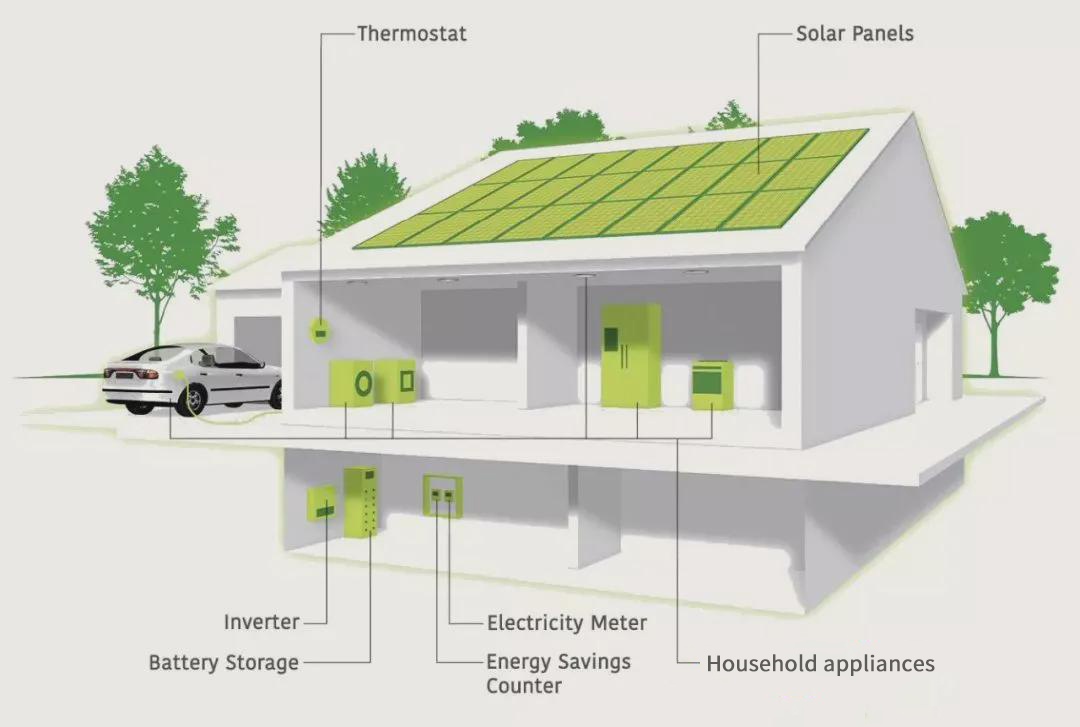
Inverter.
An inverter is a device that converts the DC power stored in a battery to utility power. The higher the efficiency of the inverter, the lower the energy loss.
Controller
The controller is the device responsible for controlling the operation of the home energy storage system, which can control the charging and discharging of the battery according to the user's electricity demand.
Other equipment
Other devices include grid interface, battery management system, etc. The grid interface is responsible for connecting the home energy storage system to the grid. The battery management system is responsible for monitoring the operating status of the battery and protecting the battery.
The larger the capacity of a home energy storage system, the more power it can store and the longer it can provide emergency power. The price of a home energy storage system is largely determined by factors such as capacity, battery type, and installation costs.
There are several options for home energy storage batteries:
Lead-acid batteries: lead-acid batteries are the earliest type of storage battery used and are inexpensive, but have a short life span, typically 3-5 years.
Lithium iron phosphate batteries: lithium iron phosphate batteries have high energy density and cycle life, generally 10-20 years.
Sodium-ion battery: Sodium-ion battery has lower cost and safety, but lower energy density and cycle life.
Lead-acid batteries

Lead-acid batteries are the earliest type of battery used and are inexpensive, but have a short life span, typically 3-5 years. Lead-acid batteries have a high power density and are suitable for use in applications requiring rapid charging and discharging.
Lithium iron phosphate battery
Lithium iron phosphate batteries have high energy density and cycle life, generally 10-20 years. Lithium iron phosphate batteries have high safety and are not easy to burn or explode.
Sodium ion battery
Sodium ion batteries have lower cost and safety, but lower energy density and cycle life. Sodium-ion batteries have high electrical conductivity and are suitable for applications requiring long life and high power density.
The following factors need to be considered when choosing a home energy storage battery:
Capacity: the higher the capacity, the more power can be stored and the longer emergency power can be provided.
Lifespan: The longer the lifespan, the less you can save on replacement battery costs.
Safety: The higher the safety, the less likely the battery will burn or explode.
Price: the lower the price, the less initial investment can be saved.
Depending on the specific needs of the family, you can choose the right type of energy storage battery.
Home energy storage battery development history

The development history of home energy storage batteries can be traced back to the late 19th century, when lead-acid batteries began to be used in storage batteries. Lead-acid batteries have a high power density and are suitable for use in applications that require rapid charging and discharging.
In the 1970s, with the development of solar power generation technology, photovoltaic energy storage systems began to appear. Photovoltaic energy storage systems can store solar-generated electricity for use at night or on cloudy days.
In the 1990s, with the development of lithium-ion battery technology, lithium-ion batteries began to be used in home energy storage systems. Lithium-ion batteries have high energy density and cycle life, but they are also more expensive.
In the 21st century, with the advancement of energy storage technology and cost reduction, home energy storage systems began to receive more and more attention. Currently, home energy storage systems are mainly used in the following areas:
Emergency power: In the event of a power outage or power restriction, home energy storage systems can provide families with emergency power to protect their daily lives from being affected.
Reducing the cost of electricity: Home energy storage systems can store low-priced electricity during the day and use it during high-priced hours at night, thus reducing the cost of electricity.
Improve the efficiency of energy utilization: Home energy storage systems can store renewable energy generation and reduce the dependence on fossil energy.
With the continuous development of renewable energy generation technology, home energy storage systems will be more widely used.

The need for home energy storage systems under the energy crisis
Energy crisis refers to the imbalance between energy supply and demand due to insufficient energy supply or high prices. An energy crisis can have a series of negative impacts, including disruptions in the supply of electricity, higher electricity prices, and a slowdown in economic development.
Home energy storage systems can help families cope with the effects of an energy crisis. In the event of a power outage, home energy storage systems can provide families with emergency power to ensure that their daily lives are not affected. When electricity prices are high, home energy storage systems can store low-priced electricity during the day and use it during high-priced hours at night, thus reducing electricity costs.
Therefore, the energy crisis provides favorable conditions for the popularization of home energy storage systems. As the energy crisis intensifies, home energy storage systems will receive more and more attention.
The following are the necessities of home energy storage systems brought about by the energy crisis:
Improve the security of electricity: In the event of power outages or power limitations, home energy storage systems can provide emergency power for families and safeguard daily life from being affected.
Reduce the cost of electricity: When electricity prices are high, home energy storage systems can store low-priced electricity during the day and use it during high-priced hours at night, thus reducing the cost of electricity.
Enhance energy efficiency: Home energy storage systems can store renewable energy generation, reducing reliance on fossil energy sources.
Enhance energy security: Home energy storage systems can reduce dependence on external energy supplies and enhance energy security.
Therefore, in the context of the energy crisis, home energy storage systems are of great practical significance.

The importance of home energy storage systems for frequent power outages
In areas with frequent power outages, home energy storage systems can provide important security for families. In the event of a power outage, home energy storage systems can provide families with emergency power to safeguard their daily lives from being affected.
Here are the importance of home energy storage systems for frequent power outages:
Improve the security of electricity: In the event of a power outage, home energy storage systems can provide families with emergency power to safeguard daily life from disruption.
Reduce the cost of electricity: When electricity prices are high, home energy storage systems can store low-priced electricity during the day and use it during high-priced hours at night, thus reducing the cost of electricity.
Enhance energy efficiency: Home energy storage systems can store renewable energy generation, reducing reliance on fossil fuels.
Enhance energy security: Home energy storage systems can enhance energy security by reducing dependence on external energy supplies.
Therefore, home energy storage systems are of great relevance in areas with frequent power outages.
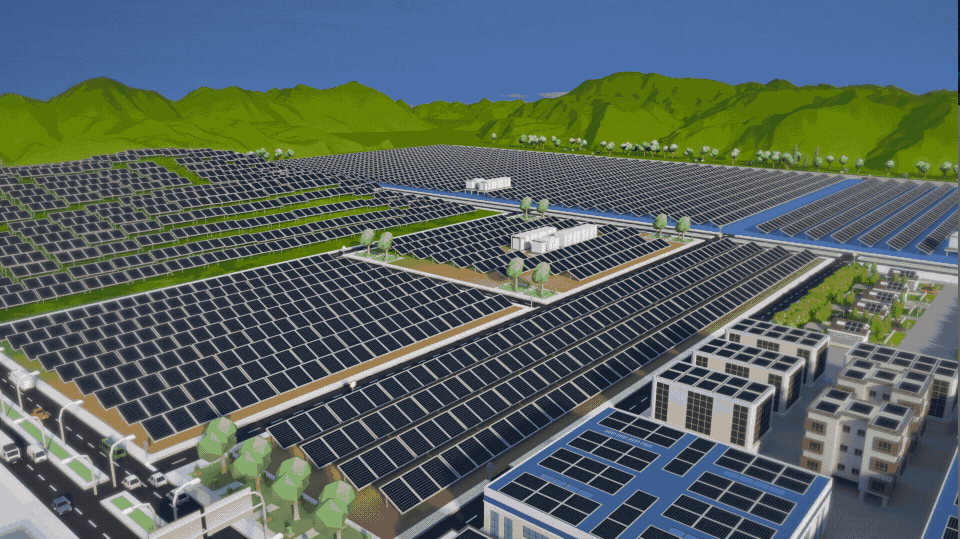
Specifically, home energy storage systems can provide households with the following security:
Lighting: The home energy storage system can provide lighting for the family, to ensure that the family can be normal lighting in the power outage.
Electrical appliances: The home energy storage system can provide power for home appliances, to ensure that the family can normally use electrical appliances in the event of a power outage.
Medical equipment: The home energy storage system can provide power for home medical equipment, to ensure that the family can normally use medical equipment in the event of a power outage.
Communication equipment: the home energy storage system can provide power for home communication equipment, to ensure that the family can normally use communication equipment during power outages.
Therefore, for families with frequent power outages, the installation of home energy storage systems is very necessary.
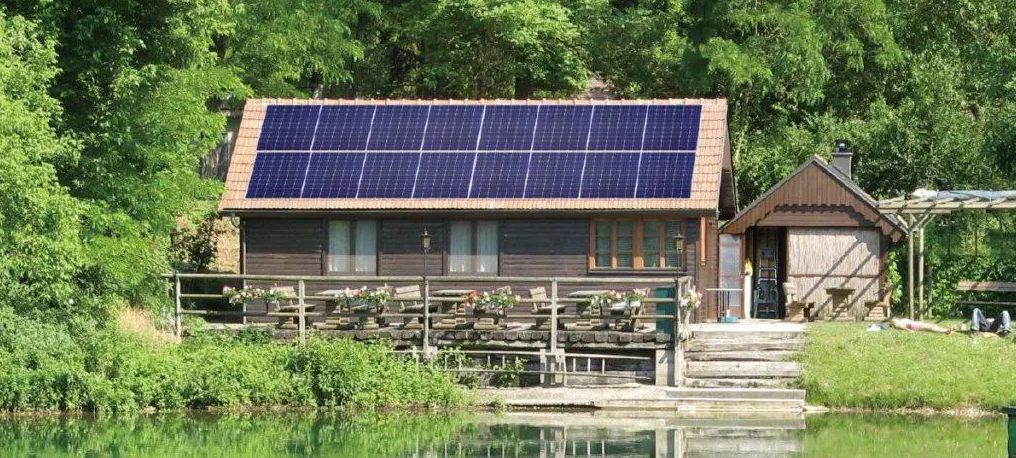
What is the development trend of home energy storage system?
The development trend of home energy storage system mainly has the following aspects:
Technological progress: With the continuous progress of energy storage technology, the cost of home energy storage system will be further reduced and performance will be further improved.
Policy support: Governments will introduce policies to encourage the development of home energy storage systems, which will provide favorable conditions for the popularization of home energy storage systems.
Market demand: With the aggravation of the energy crisis and the popularization of renewable energy generation, the demand for home energy storage systems will continue to grow.
Specifically, the development trend of home energy storage system can be summarized as follows:
Advances in energy storage technology will further reduce the cost of home energy storage systems. **With the continuous progress of energy storage technology, the energy density and cycle life of batteries will be further improved, and the cost will be further reduced. This will make home energy storage systems more affordable, thus promoting their popularization.
Policy support will provide favorable conditions for the development of home energy storage systems. ** Governments will introduce policies to encourage the development of home energy storage systems, which will provide favorable conditions for the popularization of home energy storage systems. For example, the U.S. government will provide subsidies for home energy storage systems, and the Chinese government will encourage grid companies to cooperate with home energy storage system developers.
Growing market demand will drive the development of home energy storage systems. **Demand for home energy storage systems will grow as the energy crisis intensifies and renewable energy generation becomes more widespread. For example, in the context of the energy crisis, home energy storage systems can provide emergency power for households and safeguard daily life from disruption. In the context of the popularization of renewable energy generation, home energy storage systems can store renewable energy generation and improve energy utilization efficiency.
Overall, home energy storage system has a broad market prospect and its development trend is positive. With technological progress, policy support and growing market demand, home energy storage systems will be more widely used.

Overseas home energy storage market continues to grow mainly due to the following reasons:
Intensification of energy crisis: Energy crisis refers to the imbalance between energy supply and demand due to insufficient energy supply or excessive price. Energy crises can lead to problems such as disruption in power supply and rising electricity prices, which can cause inconvenience to family life. A home energy storage system can provide emergency power for families and safeguard daily life from being affected.
Popularization of renewable energy power generation: Renewable energy power generation is clean and sustainable, but its power generation is volatile and intermittent. Home energy storage systems can store renewable energy generation and improve energy utilization efficiency.
Policy support: Governments have taken energy transition as an important strategy and introduced policies to encourage the development of home energy storage systems. For example, the U.S. government will provide subsidies for home energy storage systems, and the Chinese government will encourage grid companies to cooperate with developers of home energy storage systems.
Technological advances: Advances in energy storage technology have led to decreasing costs and increasing performance of home energy storage systems. This makes home energy storage systems more affordable and more suitable for home use.
Specifically, the overseas home energy storage market shines in the following regions:
U.S.: The U.S. is the largest home energy storage market in the world. in 2022, the new installed capacity of home energy storage systems in the U.S. reached 15.6GWh, a year-on-year growth of 136.4%.
Europe: Europe is the second largest home energy storage market in the world. in 2022, the new installed capacity of home energy storage systems in Europe reached 5.68GWh, a year-on-year growth of 107%.
Australia: Australia is the world's third largest home energy storage market. 2022, the new installed capacity of home energy storage systems in Australia reached 1.1GWh, a year-on-year growth of 120%.
With the aggravation of the energy crisis, the popularization of renewable energy generation, the strengthening of policy support and the continuation of technological advances, the overseas household energy storage market will continue to maintain growth.
Russia-Ukraine conflict exacerbated the energy crisis, home energy storage demand explosion
The Russia-Ukraine conflict has exacerbated the global energy crisis, leading to soaring energy prices. Under these circumstances, the demand for home energy storage has exploded.
The Russia-Ukraine conflict has led to a global energy supply crunch, with oil, gas and coal prices rising sharply. This has put enormous pressure on the global economy and has led to a rise in the cost of electricity for households.
Under these circumstances, home energy storage systems have become an effective means for households to cope with the energy crisis. Home energy storage systems can store electricity and use it when the price of electricity is high, thus reducing the cost of electricity for households.
In addition, home energy storage systems can provide families with emergency power to protect their daily lives from being affected. In the event of a power outage or power restriction, home energy storage systems can provide power to families to avoid the inconvenience of power outages to family life.
As a result, demand for home energy storage has exploded against the backdrop of the energy crisis exacerbated by the Russia-Ukraine conflict.
According to the U.S. Energy Information Administration, the new installed capacity of home energy storage systems in the U.S. reached 15.6GWh in 2022, a year-on-year growth of 136.4%. Among them, the new installed capacity of residential PV + energy storage systems reached 11.4GWh, accounting for 73.2% of the new installed capacity of home energy storage systems.
In Europe, the demand for home energy storage systems has also seen significant growth. According to the European Union Renewable Energy Association (EUREA), the new installed capacity of home energy storage systems in Europe reaches 5.68GWh in 2022, a year-on-year increase of 107%.
In Asia, demand for home energy storage systems in China is also showing an upward trend. According to the China Photovoltaic Industry Association (CPIA), the new installed capacity of home energy storage systems in China reaches 1.1GWh in 2022, a 120% year-on-year increase.
As the Russia-Ukraine conflict continues, the global energy crisis will further intensify. In this case, the demand for home energy storage will continue to maintain the growth trend.
How is the development of overseas markets, and how much space is there in the home energy storage market?
Overseas markets are developing well, and there is plenty of room for the home energy storage market.
According to BNEF's forecast, the global household energy storage market will grow from 22GWh in 2022 to 105GWh in 2026, with a CAGR of 35%. Among them, the United States, Europe and China are the world's three largest household energy storage markets.
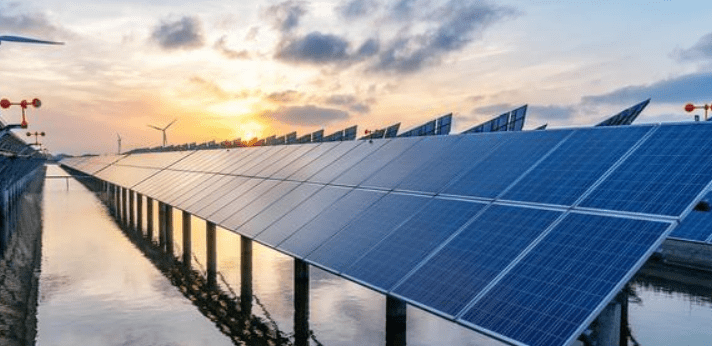
There are several main reasons for the good development of overseas household energy storage market:
Intensification of Energy Crisis: Energy crisis refers to the imbalance between energy supply and demand due to insufficient supply or high price of energy. Energy crisis can lead to problems such as interruption in power supply and increase in electricity prices, which can cause inconvenience to family life. A home energy storage system can provide emergency power for families and safeguard daily life from being affected.
Popularization of renewable energy power generation: Renewable energy power generation is clean and sustainable, but its power generation is volatile and intermittent. Home energy storage systems can store renewable energy generation and improve energy utilization efficiency.
Policy support: Governments have taken energy transition as an important strategy and introduced policies to encourage the development of home energy storage systems. For example, the U.S. government will provide subsidies for home energy storage systems, and the Chinese government will encourage grid companies to cooperate with developers of home energy storage systems.
Technological advances: Advances in energy storage technology have led to decreasing costs and increasing performance of home energy storage systems. This makes home energy storage systems more affordable and more suitable for home use.
With the aggravation of the energy crisis, the popularization of renewable energy generation, the strengthening of policy support and the continuation of technological advances, the overseas home energy storage market will continue to maintain a growth trend.
There are several main reasons for the wide space of home energy storage market:
Home energy storage system has a variety of application scenarios: home energy storage system can be used for emergency power, reduce the cost of electricity, improve the efficiency of energy utilization, and enhance the safety of home electricity.
Home energy storage system has good economy: with the progress of energy storage technology and cost reduction, the economy of home energy storage system will be further improved.
Home energy storage system has good social benefits: home energy storage system can reduce the load on the power grid and improve the operational efficiency of the power grid.
Overall, the overseas home energy storage market has a broad market prospect and its development trend is positive.
What are the key barriers for the home energy storage industry?
The key barriers of the home energy storage industry are mainly as follows:
Technical barriers: Home energy storage systems involve a variety of technologies such as batteries, inverters, power electronics, etc., of which battery technology is the key. Currently, battery technology is still in the development stage, and the energy density, cycle life and cost of batteries have yet to be improved.
Cost barriers: The cost of home energy storage systems is still high, which is one of the main factors restricting their popularization. With the progress of energy storage technology and cost reduction, the cost of home energy storage system will be further reduced, which will be conducive to its popularization.
Policy barriers: Governments' policies on home energy storage systems are not yet perfect, which also restricts their development. As governments pay more attention to the energy transition, the policy on home energy storage systems will be more perfect, which will be conducive to its development.
Market barriers: home energy storage system is an emerging market, the market acceptance is not high enough. With the popularization of home energy storage systems, market acceptance will increase, which will be conducive to its development.
Overall, the home energy storage industry has a broad market prospect, but also faces certain challenges. With technological advances, cost reductions, policy improvements and market acceptance, the home energy storage industry will get more rapid development.
Home storage products to the all-in-one, higher bandwidth trend is mainly due to the following reasons:
Changes in user demand: with the increase in household electricity demand, the user of home storage product capacity and functional requirements are also increasingly high. All-in-one home storage products can reduce the installation space, reduce installation costs, but also more in line with the user's habits.
Advances in technology: With the advancement of energy storage technology, the energy density and safety of batteries continue to improve, which makes the capacity and power of all-in-one home storage products have been improved.
Increased market competition: With the continuous development of the home storage market, the competition is becoming increasingly fierce, enterprises in order to improve competitiveness, have launched all-in-one home storage products.

All-in-one home storage products have the following advantages:
Small footprint: all-in-one home storage products will be battery, inverter and other components integrated together, small footprint, easy to install.
Low cost: All-in-one home storage products have lower manufacturing costs, so the price is relatively low.
Easy to use: the design of all-in-one home storage products is more humanized, simple to operate and easy to maintain.
Higher charge capacity home storage products have the following advantages:
Meet diversified needs: Higher bandwidth home storage products can meet the diversified needs of families for emergency power, lower electricity costs.
Enhance system efficiency: Higher charge home storage products can improve the system's power storage efficiency and utilization efficiency.
Extend the life of the system: Higher charge home storage products can extend the life of the system.
Overall, the home storage products to all-in-one machine, higher charged amount of trend development is in line with market demand and technology trends. With the progress of technology and intensified market competition, all-in-one home storage products and higher bandwidth home storage products will become the mainstream of home storage products.
Home storage products for the stock and incremental household PV market supporting needs are mainly the following aspects:
Inventory of household PV market: The inventory of household PV market is mainly for families that have installed PV systems. Home storage products can provide emergency power, reduce the cost of electricity, and improve energy utilization efficiency for the stock household PV system.Incremental household PV market: The incremental household PV market mainly targets households without PV systems installed. Home storage products can provide emergency power for incremental household PV systems, reduce electricity costs, improve energy utilization efficiency and other functions, and can also be used as supporting products for PV systems to improve the economy of PV systems.
Specifically, home storage products for the stock and incremental household PV market supporting needs can be summarized in the following aspects:Emergency power: Home storage products can provide emergency power for families, providing power for families during power outages or power limitations to ensure that daily life is not affected.
Reduce electricity costs: Home storage products can store PV power generation and use it when electricity prices are high, thus reducing the cost of electricity for families.
Enhance energy utilization efficiency: Home storage products can store PV power generation and use it at night or on cloudy or rainy days, thus enhancing energy utilization efficiency.
Overall, there is a huge demand for home storage products to support the stock and incremental household PV market. With the progress of energy storage technology and cost reduction, home storage products will be more widely used in the household PV market.

Home storage value volume mainly consists of the following parts:Battery system: the battery system is the core component of the home storage system, occupying most of the cost of the home storage system. At present, the commonly used battery types in the home storage system are lead-acid batteries, lithium iron phosphate batteries and sodium ion batteries.Among them, lithium iron phosphate battery is the most commonly used battery type for home storage system because of its relatively low price and high safety.
Inverter: The inverter is a device that converts DC power to AC power and is another important component of the home storage system.Inverters are also relatively expensive and account for a large percentage of the cost of a home storage system.
Other components: Home storage systems also include other components such as controllers and battery management systems.The price of these components is relatively low, but they also occupy a certain proportion in the cost of home storage system.
According to relevant data, at present, the average investment cost of home storage system is about 78,000 yuan.Among them, the battery system accounts for about 65,000 yuan, the inverter accounts for about 10,000 yuan, and other components account for about 0.3 million yuan.The amount of home storage value can also be estimated based on the capacity and functionality of the home storage system. In general, the larger the capacity of the home storage system, the higher the value volume. In addition, the more functions the home storage system has, the higher the value amount.
For example, a home storage system with a capacity of 10kWh, with features such as emergency power and reduced electricity costs, has a value of about 80,000 RMB.
High-capacity batteries + hybrid inverters + all-in-one machines are three important trends in the development of home energy storage systemsHigh-capacity batteries
As the demand for electricity in households increases, users demand more and more capacity from home storage systems.High-capacity batteries can meet the diversified needs of households for emergency power and lower electricity costs. In addition, high-capacity batteries can improve the system's power storage efficiency and utilization efficiency, extending the system's life.
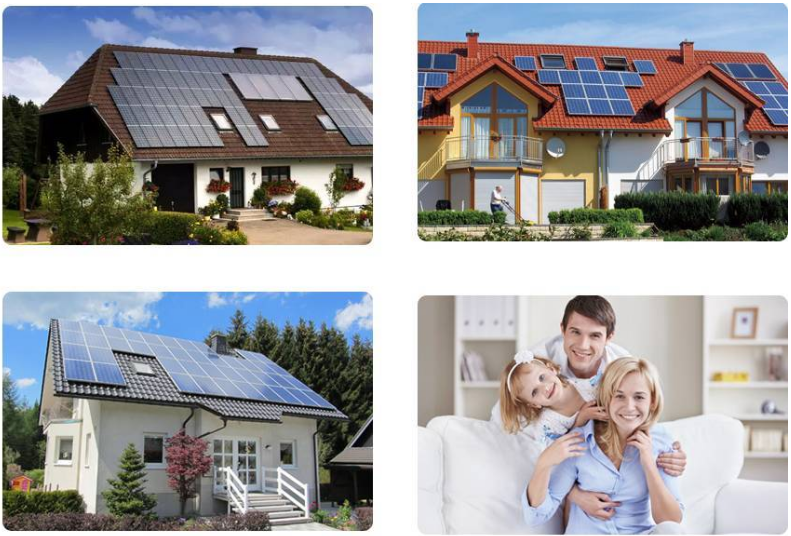
Hybrid Inverter
Hybrid inverters can be compatible with both PV and energy storage systems, providing a more comprehensive solution for households.In addition, hybrid inverters can improve system efficiency and reliability.
All-in-One
The all-in-one home storage system integrates the battery, inverter and other components in a small footprint for easy installation. In addition, all-in-one home storage systems are relatively inexpensive.The emergence of these three trends will drive home energy storage systems toward greater efficiency, economy, and convenience.Specifically, the application of high-capacity batteries will enable home energy storage systems to meet the diverse needs of households for emergency power, lower electricity costs, and so on. The application of hybrid inverters will enable home energy storage systems to more flexibly match PV systems and improve system efficiency and reliability. The application of all-in-one unit will make the home energy storage system more convenient for installation and maintenance.
With technological advances and cost reductions, high-capacity batteries, hybrid inverters and all-in-one machines will become the mainstream of home energy storage systems.The imminent energy transition, distributed photovoltaic exceeded expectations, is to promote the rapid development of home energy storage system of two key factors.Energy transition is imminentWith the intensification of global climate change, energy transition has become the consensus of governments.The main direction of energy transition is to develop renewable energy and reduce the use of fossil energy. Renewable energy is clean and sustainable, but its power generation is volatile and intermittent.Home energy storage system can store renewable energy generation, improve energy utilization efficiency, and provide peak frequency regulation services for the grid.
Distributed photovoltaic greatly exceeded expectations
Distributed photovoltaic is an important part of renewable energy. In recent years, with the technological progress and policy support, distributed PV development is rapid, far more than expected. 2022, the global distributed PV new installed capacity reached 240GW, an increase of 28% year-on-year.
Distributed photovoltaic has the characteristics of "near-site power generation, near-site consumption", which can effectively reduce the loss of power transmission, and provide families and enterprises with safe and stable power security. With the popularization of distributed PV, the demand for home energy storage systems will further increase.
Specifically, home energy storage systems can provide support for distributed PV systems in the following areas:Emergency power: Home energy storage systems can provide emergency power for families, providing them with power during power outages or power restrictions to safeguard their daily lives from being affected.
Reducing electricity costs: Home energy storage systems can store distributed PV generation for use when electricity prices are high, thus reducing the cost of electricity for households.
Improve energy utilization efficiency: Home energy storage systems can store distributed PV power generation and use it at night or on cloudy or rainy days, thus improving energy utilization efficiency.Improve power system stability: Home energy storage systems can provide peak and frequency regulation services for the power system, improving the stability of the power system.With the acceleration of the energy transition and the popularization of distributed photovoltaic, the demand for home energy storage systems will further increase, and the market size will further expand.
Rising electricity prices and subsidy policies are two key factors driving the penetration of home energy storage systems.Rising electricity prices
In recent years, global energy prices have continued to rise, resulting in rising electricity prices. Rising electricity prices have increased the cost of electricity for households, prompting them to seek solutions to reduce electricity costs. Home energy storage systems can reduce household electricity costs by storing photovoltaic (PV) generation for use when electricity prices are high.Subsidy Policy
Governments have introduced a series of subsidy policies to encourage the installation of energy storage systems in households. These subsidy policies have reduced the cost of home energy storage systems and improved the economics of installing energy storage systems in homes.
Specifically, rising electricity prices and subsidy policies can promote the penetration of home energy storage systems in the following ways:
Lowering the economic threshold: rising electricity prices improve the economics of home energy storage systems and lower the economic threshold for installing energy storage systems in homes.
Enhancing awareness: rising electricity prices have increased the awareness of households of energy storage systems and promoted their understanding of energy storage systems.
Promote popularization: Rising electricity prices and subsidy policies have combined to promote the popularization of home energy storage systems.
As electricity prices continue to rise and subsidy policies continue to be implemented, the penetration rate of home energy storage systems will further increase.
The U.S., Europe, and Australia are the major regions in the global home energy storage system marketUnited States
The U.S. is the largest region in the global home energy storage system market. in 2022, the new installed capacity of home energy storage systems in the U.S. reached 10GWh, accounting for more than 40% of the global new installed capacity. The rapid development of home energy storage systems in the United States is mainly due to the following factors:
Energy transition: the U.S. government has taken energy transition as a national strategy to vigorously develop renewable energy.Renewable energy is volatile and intermittent, home energy storage systems can store renewable energy generation to improve energy efficiency.
Rising Electricity Prices: Electricity prices in the United States continue to rise, prompting families to seek solutions to reduce electricity costs. Home energy storage systems can store photovoltaic power generation and use it when electricity prices are high, thus reducing the cost of electricity for families.
Subsidies: The U.S. government has introduced a series of subsidies to encourage households to install energy storage systems.These subsidy policies reduce the cost of home energy storage systems and improve the economics of installing energy storage systems in homes.

Among other things, the subsidy policy is an important driver for the development of the U.S. home energy storage system market.The U.S. government's subsidy policy mainly includes:
Federal tax credits: The U.S. government provides a 30% federal tax credit for home installation of energy storage systems.
State Government Subsidies: Many state governments in the U.S. have also introduced subsidies to encourage the installation of energy storage systems in homes.Utility Subsidies: Some utilities also subsidize the installation of home energy storage systems in order to attract home users to participate in grid peaking and frequency regulation.
These subsidy policies have reduced the cost of home energy storage systems and improved the economics of installing energy storage systems in homes, thus contributing to the rapid development of the U.S. home energy storage systems market.According to the U.S. Department of Energy forecast, by 2028, the U.S. home energy storage system market size will reach $15 billion, and the new installed capacity will reach 60GWh.
Europe
Europe is an important region in the global home energy storage systems market. in 2022, the new installed capacity of home energy storage systems in Europe reached 5.6GWh, accounting for more than 23% of the global new installed capacity. The rapid development of home energy storage system in Europe is mainly due to the following factors:
Energy transition: The European government has taken energy transition as a national strategy and vigorously developed renewable energy. Renewable energy has volatility and intermittency, home energy storage systems can store renewable energy generation to improve energy efficiency.
Rising Electricity Prices: Electricity prices in Europe continue to rise, prompting families to seek solutions to reduce electricity costs.Home energy storage systems can store photovoltaic power generation and use it when electricity prices are high, thus reducing household electricity costs.
Subsidies: European governments have introduced a series of subsidies to encourage households to install energy storage systems. These subsidy policies reduce the cost of home energy storage systems and improve the economics of installing energy storage systems in homes.
Australia.
Australia is an important region in the global home energy storage system market. in 2022, the new installed capacity of home energy storage system in Australia reached 2.6GWh, accounting for more than 11% of the global new installed capacity. The rapid development of home energy storage systems in Australia is mainly due to the following factors:Grid Reliability: Australia's grid reliability is poor and power outages are frequent.Home energy storage systems can provide emergency power to families, providing power to families during power outages or power limitations to ensure that daily life is not affected.
Rising Electricity Prices: Electricity prices in Australia continue to rise, prompting families to look for ways to reduce their electricity costs. Home energy storage systems can store photovoltaic power generation and use it when electricity prices are high, thus reducing the cost of home electricity consumption.
Subsidies: The Australian government has introduced a series of subsidies to encourage households to install energy storage systems.These subsidy policies have reduced the cost of home energy storage systems and improved the economics of installing energy storage systems in homes.
Other regions, such as China, Japan and South Korea, also have a certain market for home energy storage systems. However, the market size in these regions is relatively small and the development is relatively slow.The household energy storage industry is a new industry that has emerged in recent years and has huge market potential. At present, the household energy storage industry is mainly composed of two major factors: product and channel barriers.
Product barriers
The barriers of home energy storage products are mainly reflected in the following aspects:
Technical barriers: household energy storage products involve batteries, power electronics, control systems and other technologies, the level of technology directly affects the performance and life of the product. At present, the technology of household energy storage industry is still in the development stage, and the technical barriers are high.
Cost barriers: the cost of home energy storage products mainly consists of the cost of batteries, power electronics, control systems and other components.At present, the cost of home energy storage products is still high, which limits its market penetration.
Brand barriers: Home energy storage products have certain attributes of consumer appliances, and consumers have a high degree of brand recognition.Therefore, household energy storage enterprises need to establish brand advantages in product quality, after-sales service and other aspects.
Channel barriersThe channel barriers of household energy storage products are mainly reflected in the following aspects:
Sales channels: the sales channels of household energy storage products mainly include distributor channels, direct sales channels and so on. At present, the sales channels of household energy storage products are still not perfect, which affects the market coverage of the products.Service channel: household energy storage products are complex system products, which require professional service teams for installation, maintenance and after-sales service. At present, the service channel of household energy storage products is still immature, which affects consumers' willingness to buy.
Overall, the home energy storage industry is an industry with great potential, but also faces challenges in technology, cost, branding and channels. With the advancement of technology, cost reduction, brand establishment and channel improvement, the household energy storage industry will usher in a broader space for development.Home energy storage battery barriers: channel
Among them, the channel barrier is one of the key barriers in the home energy storage battery industry.Household energy storage batteries are usually used in conjunction with photovoltaic systems, and have certain consumer appliance properties, so the channel layout is crucial to the sales of household energy storage batteries.Household energy storage battery channels are mainly divided into the following categories:
Direct sales channel: manufacturers sell directly to end users.
Distribution channels: manufacturers and dealers, dealers are responsible for sales to end users.
E-commerce channels: vendors sell to end users through e-commerce platforms.
Direct sales channel can realize the effective control of the manufacturer of the product, but the cost is higher. Distribution channels can expand the scope of product sales, but need to invest a lot of channel resources. E-commerce channel can reduce the cost of sales, but need to strengthen the product brand publicity and after-sales service.
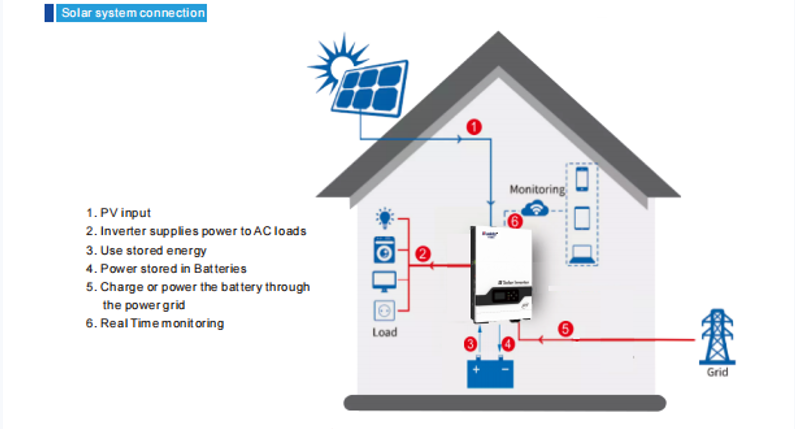
At present, the channel layout of the household energy storage battery industry is still in the development stage, and each manufacturer is exploring the most suitable channel mode for itself.
With the continuous development of the household energy storage battery industry, channel barriers will gradually reduce, which will provide strong support for the rapid development of the industry.
Home energy storage battery barriers: product power
Energy density: energy density is a measure of the ratio of battery capacity and volume, the higher the energy density, the stronger the battery life.
Safety: home energy storage batteries are usually installed indoors, so safety is one of the most concerned factors for consumers.
Quality: the quality of home energy storage battery directly affects its service life and performance stability.
Price: the price of home energy storage battery is still high, so the cost-effective is also an important consideration for consumers.
At present, the domestic energy storage battery industry product competition is increasingly fierce, each manufacturer is constantly improving product performance, quality, safety and price competitiveness.
With the continuous development of the home energy storage battery industry, product power will become one of the core elements of industry competition.
Home photovoltaic energy storage system
Home photovoltaic energy storage system is a combination of solar panels, photovoltaic inverters, energy storage systems, etc., can be converted into solar energy, storage and management, to achieve self-sufficient clean energy supply for the family.
Home PV energy storage system is mainly composed of the following parts:
Solar panels: convert sunlight into electricity.
Photovoltaic inverter: Converts the DC output of solar panels into AC power for home use.
Energy storage system: stores excess electricity generated by solar panels for power or emergency use.
Energy management system: Unified management of home PV energy storage system, including power input, output, storage and use.
Home PV energy storage system has the following advantages:
Saving electricity cost: Home PV energy storage system can utilize solar energy to generate electricity, reducing the dependence on utility power, thus saving electricity cost.
Improve electricity security: Home PV energy storage systems can provide emergency power for families, safeguarding their electricity needs in the event of a utility power outage.
Reduce carbon emissions: Home PV energy storage systems use clean energy, which can reduce carbon emissions and protect the environment.
The application scenarios of home PV energy storage system mainly include:
Self-use: Home PV energy storage system mainly meets the family's daily electricity demand, and provides emergency power for the family.
Commercial: Home PV energy storage system can be used in small stores, shopping malls and other places to reduce electricity expenses.
Industrial: Home PV energy storage systems can be used in industrial enterprises to improve the safety and stability of electricity consumption.
The cost of home PV energy storage system is still high, which restricts its popularity in the market. With the progress of technology and policy support, the cost of home PV energy storage system will be gradually reduced, and it will be more widely used in the field of home electricity consumption in the future.
DC coupling system suitable for newly installed PV
DC-coupled system is to connect PV modules, energy storage system and inverter in series, which can directly store the DC power issued by PV modules in the battery. DC-coupled systems have the following advantages:
High efficiency: The efficiency of DC coupling system is higher than AC coupling system, which can save power loss.
Simple system: DC coupling system has a simple system structure and is easy to install and maintain.
Low cost: DC-coupled systems have a low cost and are suitable for newly installed PV systems.
DC-coupled systems are suitable for the following scenarios:
Newly installed PV systems: DC coupled systems are suitable for newly installed PV systems and can be designed and installed together with PV modules and inverters to improve system efficiency and reduce costs.
Scenarios with large PV power generation: DC-coupled systems are suitable for scenarios with large PV power generation, which can fully utilize the PV power generation and improve the system revenue.
Scenarios with higher requirements for system efficiency: DC-coupled systems are more efficient than AC-coupled systems and are suitable for scenarios with higher requirements for system efficiency.
The following are some of the characteristics of DC-coupled systems suitable for new PV installations:
Adoption of high-efficiency PV modules: high-efficiency PV modules can increase PV power generation and provide more power for the energy storage system.
Adoption of high-capacity batteries: High-capacity batteries can store more electricity to meet the household's electricity demand.
Adoption of high-efficiency inverters: High-efficiency inverters can convert the electrical energy in the energy storage system into AC power to meet the household's electricity demand.
When choosing a DC-coupled system, comprehensive consideration should be made based on the household's electricity demand, PV power generation capacity and budget.
AC coupling system suitable for installed PV
AC-coupled system is a parallel connection of PV modules, energy storage system and inverter, which can convert the DC power from PV modules into AC power, which can then be stored in the battery. AC-coupled systems have the following advantages:
Good compatibility: AC coupling system can be compatible with existing PV systems and is suitable for installed PV systems.
Convenient installation: AC coupling system is easy to install, can be directly in the existing PV system with the addition of batteries and inverters.
Low cost: AC-coupled systems have a low cost and are suitable for installed PV systems.
AC-coupled systems are suitable for the following scenarios:
Installed PV systems: AC coupling systems are suitable for installed PV systems and can add energy storage without affecting the existing PV system.
Scenarios requiring high system compatibility: AC-coupled systems are compatible with existing PV systems and are suitable for scenarios requiring high system compatibility.
Scenarios with high system cost requirements: AC coupling systems have lower costs and are suitable for scenarios with high system cost requirements.
The following are some of the features of AC-coupled systems that are suitable for installed PV:
Adoption of high-efficiency PV modules: High-efficiency PV modules can increase PV power generation and provide more power for the energy storage system.
Adoption of high-capacity batteries: High-capacity batteries can store more electricity to meet the household's electricity demand.
Adoption of high-efficiency inverters: High-efficiency inverters can convert the power in the energy storage system into AC power to meet the household's electricity demand.
Grid-connected/off-grid home energy storage system
Grid-connected home energy storage system and off-grid system are two different types of home energy storage systems, which have certain differences in system structure, working principle and application scenarios.
Grid-connected home energy storage system
Grid-connected home energy storage system refers to connecting the energy storage system to the power grid, so that the excess electricity can be sold online or obtained from the power grid. Grid-connected home energy storage systems have the following advantages:
Electricity bill savings: Grid-connected home energy storage systems can utilize photovoltaic power generation, reducing reliance on utility power and thus saving electricity bills.
Improve electricity security: Grid-connected home energy storage systems can provide emergency power for the family and safeguard the family's electricity needs in the event of a utility power outage.
Increase income: Grid-connected home energy storage systems can sell excess electricity online, increasing household income.
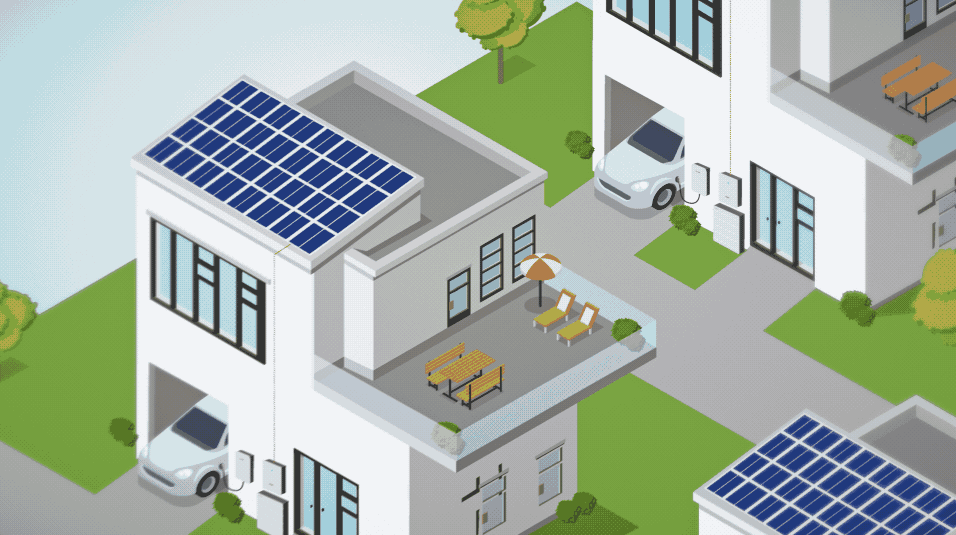
Grid-connected home energy storage systems are suitable for the following scenarios:
Areas with abundant light: Grid-connected home energy storage systems rely on photovoltaic power generation and are therefore suitable for areas with abundant light.
Areas with high electricity prices: Grid-connected home energy storage systems can save electricity costs by selling electricity online, so they are suitable for areas with high electricity prices.
Scenarios with high security requirements: Grid-connected home energy storage systems can provide emergency power for families, so they are suitable for scenarios with high security requirements.
In 2023, the price of residential electricity in Germany will be 30.22 euro cents per kWh, with a renewable energy surcharge of 6.41 euro cents.
The price of residential electricity in Germany consists of the following components:
Basic charge: a fixed annual fee paid by each customer to cover the costs of grid operation, maintenance, etc.
Electricity charge: billed according to the amount of electricity used, with rates usually differentiated according to the amount of electricity used.
Renewable energy surcharge: a subsidy to support renewable energy generation.
The price of residential electricity in Germany has shown a rapid upward trend in recent years. in 2010, the price of residential electricity in Germany was 20.21 euro cents per kWh, and by 2023, the price has risen by more than 50%.
The main reasons for the increase in residential electricity prices in Germany include:
Decline in the cost of electricity generation from renewable energy sources, leading to an increase in the renewable energy surcharge.
Increases in the price of natural gas, leading to an increase in the cost of electricity generation.
Electricity marketization reform, leading to an increase in wholesale electricity prices.
The German government is taking steps to counteract the rise in residential electricity prices. For example, the government is reducing the rate of the renewable energy surcharge and subsidizing electricity costs for households.

New installations of home energy storage in Australia (MWh)
According to a recent survey report released by SunWiz, an Australian solar market consultancy, Australia deployed 589 MWh of residential battery storage systems in 2022, a 55% increase compared to the previous year.
As a result, 589 MWh of new home energy storage was installed in Australia in 2022.
Global market distribution of new home energy storage installations to 2020
According to Solar Power Europe, the global installed capacity of new home energy storage in 2022 is 15.6GWh, a year-on-year growth of 136.4%.
Among them, the U.S., Europe, Australia, Japan, and China will add 593MW, 5.68GW, 589MW, 200MW, and 165MW of new installations, respectively, accounting for more than 95% of the total global installed capacity of home energy storage.
Therefore, the top five countries in the global new home energy storage installation market in 2022 are:
Country New installed capacity (GWh) Share (%)
U.S. 5.93 38.3%
Europe 5.68 36.4
Australia 0.59 3.8%
Japan 0.2 1.3
China 0.17 1.1%
The U.S. is the world's largest home energy storage market, with its new installations accounting for 38.3% of total global home energy storage installations. Europe follows with a 36.4% share. Australia, Japan and China accounted for 3.8%, 1.3% and 1.1% respectively.
The global household energy storage new installation market shows a trend of centralization, mainly concentrated in developed countries such as the United States, Europe, and Australia. This is mainly due to better policy support, higher energy prices and greater market demand in these countries.
Australian Energy Market Commission Wholesale Tariffs
The Australian Energy Market Operator (AEMO) Wholesale Tariff is the price at which electricity is traded wholesale in Australia's National Electricity Market (NEM), which is the largest electricity market in Australia, covering New South Wales, Victoria, Queensland, South Australia, New South Wales, New South Wales, New South Wales, New South Wales, New South Wales, New South Wales, New South Wales, New South Wales, New South Wales and South Australia. The NEM is the largest electricity market in Australia, covering New South Wales, Victoria, Queensland, South Australia, Tasmania and the Australian Capital Territory.
The AEMO wholesale electricity price is quoted by generators based on their costs, demand and other factors, and then determined through a competitive bidding mechanism.The AEMO wholesale electricity price is usually determined by the following factors:
Generation cost: Generation cost is the main determinant of electricity price. As the price of fuel increases, the cost of power generation also increases, which leads to an increase in the price of electricity.
Demand: Demand is another important determinant of electricity prices. As the demand increases, the price of electricity also increases.
Climate: Climate is an indirect influence on the price of electricity. In summer, electricity prices are usually higher than in winter due to increased demand for air conditioning.
AEMO wholesale electricity prices are usually settled once a day in the morning. The settled tariff will be used as the basis for electricity retailers to charge consumers for electricity.
In 2022, Australian AEMO wholesale electricity prices showed a rapid upward trend. in June 2022, electricity prices on the east coast of Australia hit an all-time high of AU$15,500 per MWh.
The main reasons for the increase in AEMO wholesale electricity prices include:
Rising Fuel Prices: In 2022, global energy prices increased significantly, with coal and natural gas prices rising particularly sharply.
Generation equipment failures: in 2022, a number of generation equipment failures occurred on the east coast of Australia, resulting in a reduction in generation capacity.
Weather factors: In 2022, the east coast of Australia experienced unusually cold weather, leading to increased demand for electricity.
The Australian government is taking steps to address the increase in AEMO wholesale electricity prices. For example, the government is increasing the proportion of electricity generated from renewable sources and subsidizing home energy storage systems.
Green Energy Markets proposes a percentage of photovoltaic systems equipped with energy storage
Green Energy Markets is a consulting firm specializing in the renewable energy market. The company published a report in 2023 with recommendations for the proportion of photovoltaic (PV) systems equipped with energy storage.
The report states that equipping PV systems with energy storage can improve the reliability, flexibility and economics of PV power systems. Energy storage systems can provide backup power for PV systems to cope with cloudy days and nighttime power demands. In addition, energy storage systems can help PV systems participate in the electricity market and provide ancillary services, thereby generating additional revenue.
According to the report's recommendations, PV systems should be equipped with at least 50% energy storage. This percentage can meet the daily electricity needs of households and businesses and provide flexibility to the grid.
The report also notes that the cost of energy storage systems is declining and is expected to fall further in the coming years. As the cost of energy storage declines, it will become more economically viable to equip PV systems with energy storage.
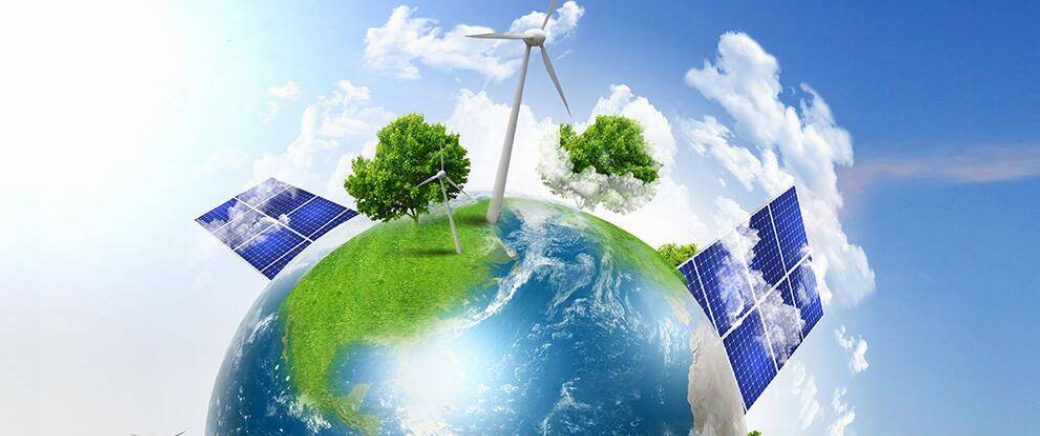
Specifically, Green Energy Markets makes the following recommendations:
50% of home PV systems should be equipped with energy storage.
Commercial and industrial solar systems should be equipped with 75% storage.
Renewable energy generation facilities should have 100% energy storage.
These recommendations are intended to promote the deployment of energy storage in PV systems and to facilitate the penetration of renewable energy in the electricity system.

